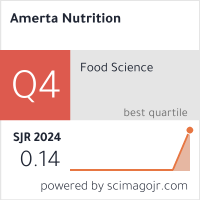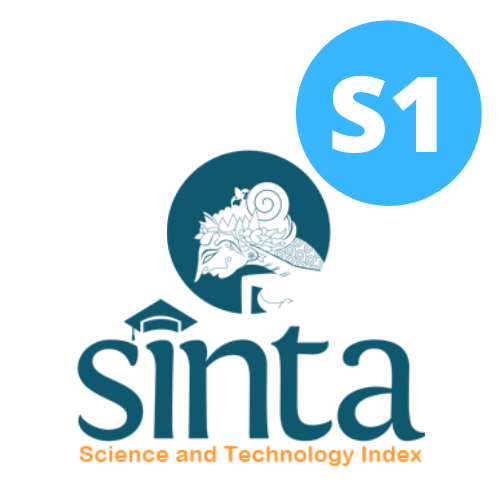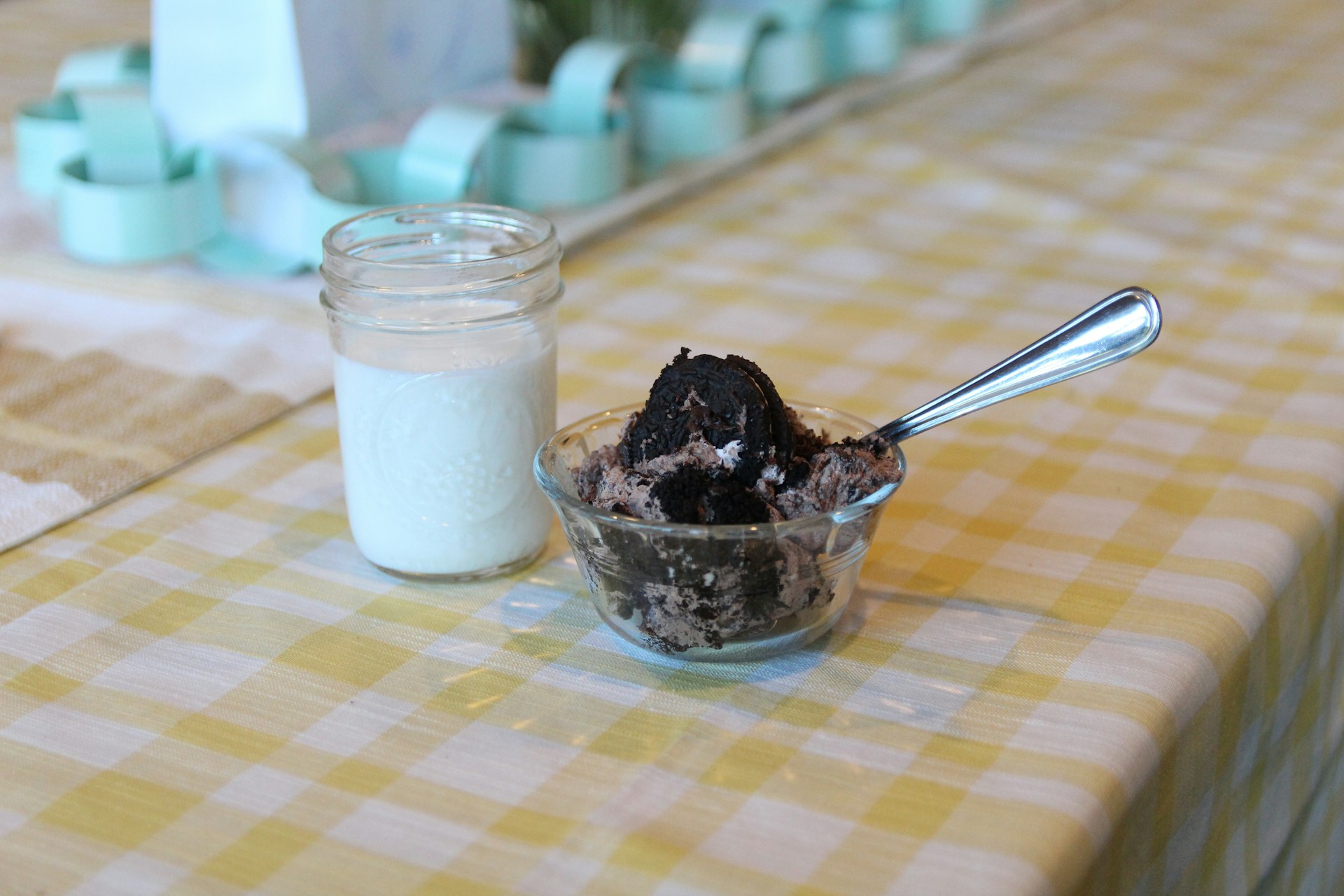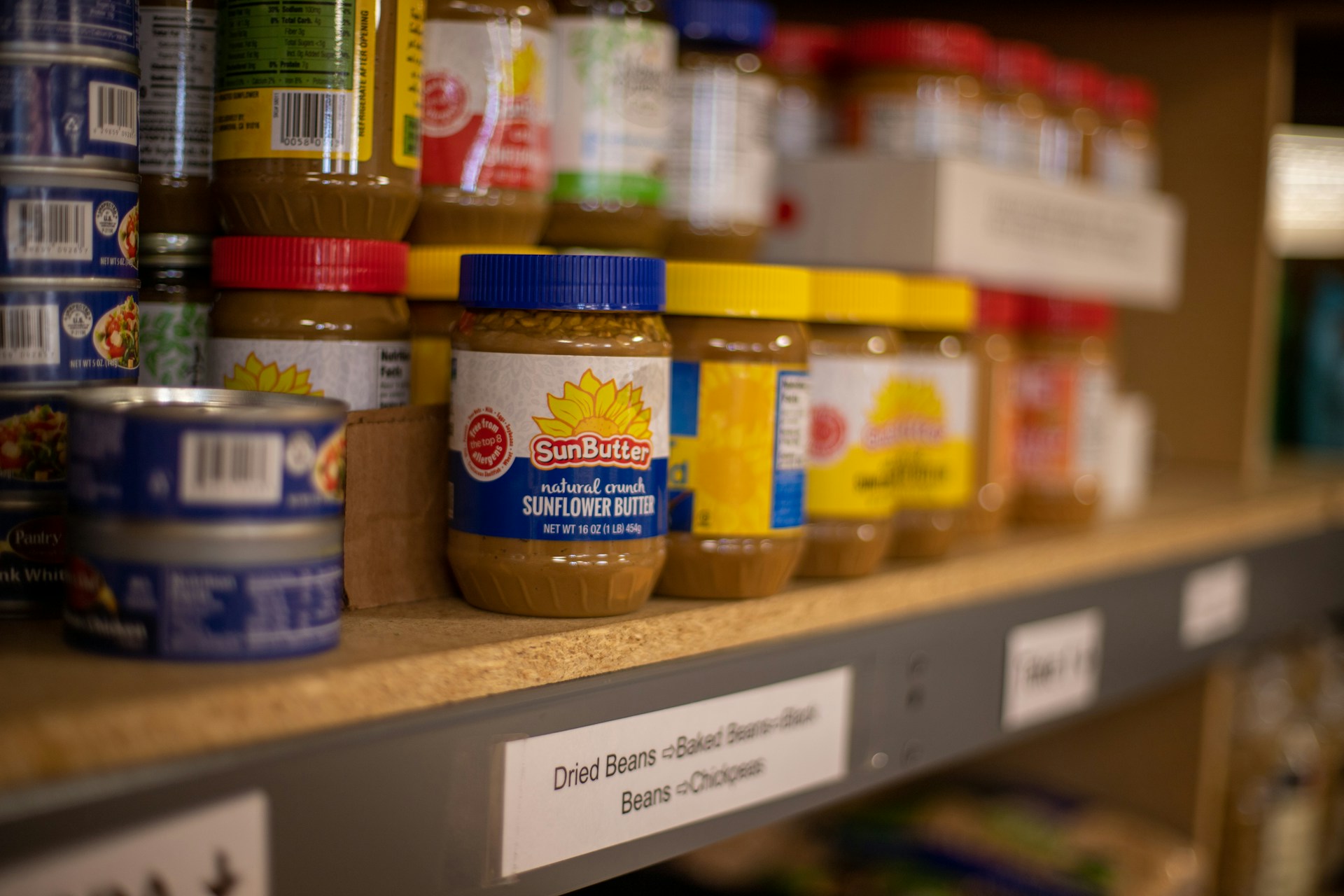Analysis of Phytic Acid and Tannin Content of Local Food-Based Analogue Rice as an Alternative Functional Food
Analisis Kandungan Asam Fitat dan Tanin Nasi dari Beras Analog Berbasis Pangan Lokal sebagai Alternatif Pangan Fungsional

Downloads
Background: Analog rice is an alternative food diversification that has rice-like characteristics. Various food ingredients can be utilized to produce analog rice as functional and healthy foods.
Objectives: This study aims to identify the effect of cooking techniques on the phytic acid and tannin content of analogous rice (made from sorghum, mocaf, glucomannan, and moringa flour) and C4 rice.
Methods: This experimental research used RAL for two treatments, namely cooking rice with a steamer and a rice cooker. This research was conducted in October-November 2022 at the Chem-mix Pratama Laboratory. The sample used analog rice and C4 rice for phytic acid and tannin content analysis using the Infrared Spectrophotometry and UV-S Spectrophotometry methods.
Results: The highest phytic acid content of analog rice cooked using a rice cooker and a steamer was 6.64 mg and 4.75 mg respectively. The highest average tannin content of analog rice cooked using a rice cooker and a steamer was 18.35 mg and 19.55 mg respectively. The highest phytic acid content of C4 rice cooked using a rice cooker and a steamer was 7.43 mg and 9.01 mg respectively. The tannin content of C4 rice cooked using e rice cooker and a steamer was 4.45 mg and 9.11 mg respectively.
Conclusions: The phytic acid content of analog rice is lower than in C4 rice. The tannin content of analog rice is higher than C4 rice. Tannin content reduction in analog rice needs to be studied further.
INTRODUCTION
Rice has become the main source of carbohydrates for some communities in Indonesia. The glycemic index value of white rice is relatively high, namely 82. Consuming foods with a high glycemic index for a long time can cause various diabetes complications and insulin resistance. Thus, foods with a low glycemic index can be used as alternative functional foods and support food diversification programs such as producing analog rice1Analog rice can be produced from various ingredients molded to resemble rice grains with modified nutritional content. Analog rice is a food diversification product and can be consumed similarly to staple foods such as rice. Utilization of local ingredients as a source of carbohydrates to produce analog rice which is as nutritious as or even more nutritious than white rice2Analog rice can be produced using extrusion technology by mixing food ingredients such as sorghum and mocap (modified cassava flour) to make analog rice and molding it to resemble rice grains3;4.
Sorghum contains antioxidants, especially those derived from tannins5Tannins are polyphenolic compounds that can have both positive and negative effects. Tannins can affect the color, taste, and nutritional value of seeds and their products. Tannins are also antioxidants that bind free radicals enabling the body to prevent cell damage and the development of diseases6Phytic acid is an antioxidant and anti-nutrient binding to proteins and minerals and forming bonds that reduce the solubility of the bound compounds. This condition reduces the absorption of minerals and proteins in the body resulting in a decrease in the nutritional value of food7Glucomannan is a manna-type polysaccharide found in conifers and tubers. Konjac glucomannan, derived from the plant Amorphophallus Konjac, is a water-soluble, high molecular weight, non-ionic glucomannan. Indonesia has some botanical sources of glucomannan such asAmorphophallus Ancophyllus Plain/Amorphophorus Müller Blume)8;9Moringa Oeifera Lamkbelongs to the Moringaceae family which is a medicinal plant containing vitamins. Moringa contains 7 times more vitamin C than oranges, 10 times more vitamin A than carrots, 17 times more calcium than milk, 9 times more protein than yogurt, 15 times more potassium than bananas, and 25 times more iron. much more than spinach10Mocaf is cassava flour (Manihot Esculenta Krantz), a source of carbohydrates that is widely cultivated in Indonesia. Improvement of cassava flour using the fermentation method produces mocap flour. The controlled fermentation process in mocaf flour production uses Lactic Acid Bacteria (LAB) seeds. Species studied coveredLactobacillus plantarum and Lactobacillus Casei3;11.
Phytic acid contains antioxidants and anti- nutritional compounds which have been proven as its disadvantages. Complex compounds such as insoluble proteins can bind to phytic acid. Thus, the formation of protein phytate compounds causes a decrease in protein availability for the body causing a reduction in the nutritional value of the food product. Tannin is a unique polyphenolic compound that can have both positive and negative effects on health. Tannins can affect the color, flavor, and nutritional quality of the products produced. Tannins also function as antioxidants which can bind free radicals enabling the body to avoid cell damage and prevent the emergence of various diseases. Free radicals contribute to damage to proteins, Deoxyribonucleic Acid (DNA) and fats in cells and tissues. Studies concerning the content of tannin and phytic acid as anti-nutritional substances in analog rice products made from sorghum flour, mocap, moringa and glucomannan have never been done. Thus, this present study aims to analyze the phytic acid and tannin content in analog rice products and identify whether cooking techniques influence analog rice and C4 rice.
METHODS
This experimental research used RAL for two treatments, namely cooking rice with a steamer and a rice cooker. It used two samples, namely analog rice made from sorghum flour, mocap, glucomannan, and moringa flour, and C4 rice with two repetitions of eachTable 1This research was carried out in October-November 2022 at the Che-mix Pratama Laboratory to find out the phytic acid and tannin content. The production of analog rice was carried out in the Food Technology Laboratory of the Faculty of Agriculture, Mataram University. Meanwhile, the process of cooking analog rice and C4 rice was carried out in the Culinary Laboratory of Alma Ata University. The samples used analog rice made from sorghum flour, mocap, glucomannan and moringa, and C4 rice. The development of this analog rice product is a modification based on previous research12;13The independent variable in this research was cooking techniques using a steamer and a rice cooker, while the dependent variable was the analysis of phytic acid and tannin content.
Type of Rice | Cooking Techniques | Repetition | ||
|---|---|---|---|---|
1 | 2 | 3 | ||
Analog Rice | R | AR1 | AR2 | AR3 |
K | AK1 | AK2 | AK3 | |
C4 Rice | R | CR1 | CR2 | CR3 |
K | CK1 | CK2 | CK3 | |
This research used some tools and materials such as scales, basins, mixers, extruder machines, steamers, and cabinet dryers as well as sorghum flour, mocap flour, glucomannan flour, moringa flour, and water14;15The preparation covered procuring samples in the form of analog rice and C4 rice. The analog rice formulation referred to the previous research with the best treatment of P2 (2%) with ingredients of 88 g sorghum flour, 10 g mocap flour, 2 g moringa flour, and
Kementerian Pertanian. Renstra Kementan 2015-2019 (Edisi Revisi). 271 Preprint at (2016).
Satrijo Saloko, Sri Widyastuti, Rumiyati, Rosmilawati, & Mita Eka Fitriani. Inovasi Teknologi Beras Sehat Analog Fungsional Untuk Kesejahteraan Masyarakat. Jurnal Pepadu 1, 157–165 (2020).
Asmoro, N. W. Karakteristik dan Sifat Tepung Singkong Termodifikasi (Mocaf) dan Manfaatnya pada Produk Pangan. Journal of Food and Agricultural Product 1, 34–43 (2021).
Faturochman, H. Y., Ismaya, P. L., Hasani, R. P., Alfatah, R. F. & Nur’alina, I. Karakteristik Beras Analog Instan Dari Tepung Sorgum (Sorghum Bicolor L) Pragelatinisasi Dengan Penambahan Tepung Daun Kelor (Moringa oleifera). Jurnal Gizi dan Pangan Soedirman 6, 102–117 (2022).
Farrah, S. D. et al. Analisis Kandungan Gizi dan Aktivitas Antioksidan pada Cookies Substitusi Tepung Sorgum (Sorghum bicolor, L). 1 4, 20–28 (2022).
Widowati, L., Isnawati, A., Alegantina, S. & Retiaty, F. Potensi Ramuan Ekstrak Biji Klabet dan Daun Kelor sebagai Laktagogum dengan Nilai Gizi Tinggi. Media Penelitian dan Pengembangan Kesehatan 29, 143–152 (2019).
Prabawa, S., Zoelnanda, A., Anam, C. & Samanhudi. Evaluation of Sensory and Physichochemical Quality of Sorghum (Sorghum bicolor L. Moench) Wet Noodle as an Alternative of Functional Food. Jurnal Teknologi Hasil Pertanian 16, 13–28 (2023).
Siska Ariftiyana et al. Porang (Amorphophallus oncophyllus) Flour Macerated with Strobilanthes crispus Reduced the Blood Glucose Levels of Streptozotocin-Induced Diabetic Rats | Open Access Macedonian Journal of Medical Sciences. 10, 127–131 (2022).
Rizka Qurrotun Ayun et al. Acute Toxicity Study of Porang (Amorphophallus oncophyllus) Flour Macerated with Strobilanthes crispus in Wistar Rats | Open Access Macedonian Journal of Medical Sciences. 9, 976–981 (2021).
Nabilla, D. et al. Pengembangan Biskuit “Prozi” Tinggi Protein dan Kaya Zat Besi untuk Ibu Hamil sebagai Upaya Pencegahan Stunting: Prozi Biscuit Development. Amerta Nutrition 6, 79–84 (2022).
Aji, A. S. & Balqis, R. The Probiotic Role of Lactic Acid Bacteria (LAB) in Helicobacter Pylori Gastritis: Indonesian Journal of Medical Sciences and Public Health 1, 20–27 (2020).
Aji, A. S. et al. Analisa Makronutrient, Organoleptik Dan Mutu Fisik Pada Beras Tiruan Instan Melalui Pemanfaatan Tepung Komposit (Gadung, Beras Dan Kedelai). (Universitas Brawijaya, 2014).
Kristanto, D., Aji, A., Alfarisi, R. & Yahya, R. Upaya Diversifikasi Pangan Melalui Studi Persiapan Beras Tiruan Dari Umbi Gadung Sebagai Pangan Fungsional : Kajian Pustaka. BIMGI 2, 65–71 (2014).
Sumardiono, S. et al. Production and Physicochemical Characterization of Analog Rice Obtained from Sago Flour, Mung Bean Flour, and Corn Flour Using Hot Extrusion Technology. Foods 10, 3023 (2021).
Kusumayanti, H., Sumardiono, S. & Jos, B. Analog rice production using granulation, hot extrusion, and cold extrusion methods: An overview. AIP Conference Proceedings 2667, 020013 (2023).
Wahyuningsih, I. et al. Sensory Evaluation and Fiber Content Analysis of Analog Rice with Moringa Leaf Flour Substitution. Indonesian Journal of Human Nutrition 10, 28–41 (2023).
Haditama, P. K., Permatasari, K., Sukma, N. A., Rian, M. A. & Damat. Development of Corn Flour-Based Rice Analog With The Addition of Ylang Flower Extract As A Flavor Enhancement. Jurnal Pangan dan Agroindustri 10, (2022).
Sajidah, V., Triwindiyanti, Q. A. F., Afifah, D. N. & Mahati, E. Pengaruh Substitusi Tepung Mocaf (Modified Cassava Flour) dan Rumput Laut (Eucheuma cottonii) pada Beras Analog Terhadap Uji Organoleptik dan Kandungan Serat. Jurnal Aplikasi Teknologi Pangan 11, 40–45 (2022).
Agusman, A., Apriani, S. & Murdinah, M. Penggunaan Tepung Rumput Laut Eucheuma cottonii pada Pembuatan Beras Analog dari Tepung Modified Cassava Flour (MOCAF). Jurnal Pascapanen dan Bioteknologi Kelautan dan Perikanan 9, 1 (2014).
Risfianty, D. K. & Indrawati, I. Perbedaan Kadar Tanin Pada Infusa Daun Asam Jawa (Tamarindus indica L.) dengan Metoda Spektrofotometer UV-VIS. LOMBOK JOURNAL OF SCIENCE 2, 1–7 (2020).
Feizollahi, E. et al. Review of the beneficial and anti-nutritional qualities of phytic acid, and procedures for removing it from food products. Food Res Int 143, 110284 (2021).
Zhang, Z., Liu, C., Wu, S. & Ma, T. The Non-Nutritional Factor Types, Mechanisms of Action and Passivation Methods in Food Processing of Kidney Bean (Phaseolus vulgaris L.): A Systematic Review. Foods 12, 3697 (2023).
Brouns, F. Phytic Acid and Whole Grains for Health Controversy. Nutrients 14, 25 (2021).
Suhag, R. et al. Microwave processing: A way to reduce the anti-nutritional factors (ANFs) in food grains. LWT 150, 111960 (2021).
Samtiya, M., Aluko, R. E. & Dhewa, T. Plant food anti-nutritional factors and their reduction strategies: an overview. Food Production, Processing and Nutrition 2, 6 (2020).
Maharani, P., Santoso, U., Rachma, Y. A., Fitriani, A. & Supriyadi, S. Efek Pengolahan Konvensional Pada Kandungan Gizi dan Anti Gizi Biji Petai (Parkia speciosa Hassk.). Jurnal Teknologi Pertanian 23, 151–164 (2022).
Koni, T. N. I. & Foenay, T. a. Y. Penurunan Kadar Tanin Silase Kulit Pisang dengan Menggunakan Berbagai Aditif. Jurnal Sain Peternakan Indonesia 15, 333–338 (2020).
Sharma, K. et al. Health effects, sources, utilization and safety of tannins: a critical review. Toxin Reviews 40, 1–13 (2019).
Delimont, N. M., Haub, M. D. & Lindshield, B. L. The Impact of Tannin Consumption on Iron Bioavailability and Status: A Narrative Review. Curr Dev Nutr 1, 1–12 (2017).
Copyright (c) 2024 Amerta Nutrition

This work is licensed under a Creative Commons Attribution-ShareAlike 4.0 International License.
AMERTA NUTR by Unair is licensed under a Creative Commons Attribution-ShareAlike 4.0 International License.
1. The journal allows the author to hold the copyright of the article without restrictions.
2. The journal allows the author(s) to retain publishing rights without restrictions
3. The legal formal aspect of journal publication accessibility refers to Creative Commons Attribution Share-Alike (CC BY-SA).
4. The Creative Commons Attribution Share-Alike (CC BY-SA) license allows re-distribution and re-use of a licensed work on the conditions that the creator is appropriately credited and that any derivative work is made available under "the same, similar or a compatible license”. Other than the conditions mentioned above, the editorial board is not responsible for copyright violation.












































